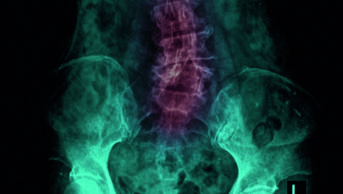
epa european pressphoto agency b.v. / Alamy
There is a closer association between use of painkillers and homicide than there is between the use of antipsychotics or antidepressants and killing someone, research published in World Psychiatry
[1]
on 1 June 2015 shows.
Media reports of high-profile killings, such as school shootings and murder suicides like the recent Germanwings crash, often suggest that the events may have been prompted or facilitated by a psychotropic or antidepressant medicine.
Many published case reports suggest a coincidental link between violence or homicide and antidepressants, and adverse event reporting suggests that some antidepressants may be associated with a disproportionately high number of violent events. However, this has not been backed up by larger epidemiological studies.
Researchers in Finland investigated the association between medication use and homicide and collected data on the 1,091 homicides reported to, and investigated by, the Finnish police in 2003–2011. Unsolved cases and those where data on the offender were incomplete or blocked for security reasons were excluded, and each of the remaining 959 cases was matched with 10 controls chosen by sex, age and municipality at the time of the offence. Data on medication usage by the offenders and the controls between January 1995 and December 2011 were then compared. The median age of offenders and controls was 36.3 years (range 13.3–88.0 years), and 88.5% of offenders were male.
The researchers were surprised to find that use of painkillers increased the risk of committing a homicide by two or three fold, for opiate painkillers the risk doubled (relative risk [RR] 1.92; 95% confidence interval [CI] 1.36–2.72; P<0.001) and for anti-inflammatory painkillers it trebled (RR 3.06; 95%; CI 1.78–5.24; P<0.001).
The link to homicide and use of opiate painkillers or benzodiazepines was much greater in people aged under 26 years, for whom the risk of committing a homicide was trebled with opiate painkillers (RR 3.23; 95%; CI 1.05–9.94; P=0.04) and doubled with benzodiazepines (RR 1.95; 95% CI 0.95–4.00; P=0.07).
The researchers found that use of antipsychotics was not associated with a significantly increased risk of committing a homicide (adjusted RR 1.10; 95% CI 0.82–1.47;P=0.54). Use of antidepressants was associated with a slightly elevated risk (RR 1.31; 95% CI 1.04–1.65; P=0.022) and the use of benzodiazepines with a significantly elevated risk (RR 1.45; 95% CI 1.17–1.81; P=0.001).
“Antidepressant use per se was associated with an only modestly increased risk of committing a homicide,” say the researchers, adding that their findings “imply that the use of antidepressants should not be denied to either adults or adolescents due to a presumed risk of homicidal behaviour”.
The “surprisingly” high risk associated with opioid and non-opioid analgesics deserves further attention in the treatment of pain among individuals with criminal history, they say.
Lead researcher Jari Tiihonen, from the department of forensic psychiatry at Niuvanniemi Hospital, Kuopio, and the National Institute for Health and Welfare in Helsinki, says that in many cases benzodiazepines had been prescribed in very high doses for a long time. “Benzodiazepines can weaken impulse control, and earlier research has found that painkillers affect emotional processing. Caution in prescribing benzodiazepines and strong painkillers to people with a history of substance abuse is advisable,” he says.
Although the majority of offenders were under the influence of intoxicants at the time of the homicide, the researchers concluded that differences between the drug groups could not be explained by their simultaneous use.
References
[1] Tiihonen J, Lehti M, Aaltonen M et al. Psychotropic drugs and homicide: a prospective cohort study from Finland. World Psychiatry 2015. doi:10.1002/wps.20220.


